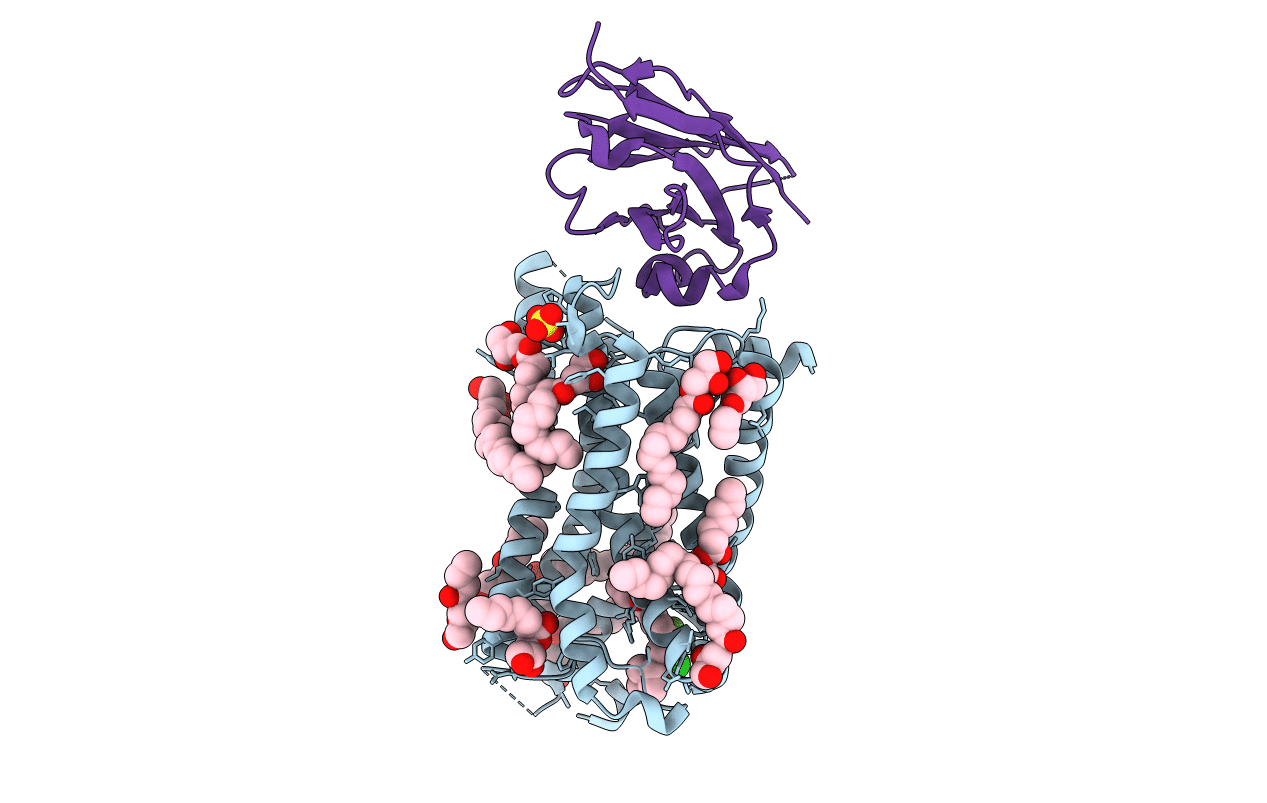
Deposition Date
2020-05-11
Release Date
2020-09-16
Last Version Date
2024-11-20
Entry Detail
PDB ID:
6Z10
Keywords:
Title:
Crystal structure of a humanized (K18E, K269N) rat succinate receptor SUCNR1 (GPR91) in complex with a nanobody and antagonist
Biological Source:
Source Organism:
Rattus norvegicus (Taxon ID: 10116)
Vicugna pacos (Taxon ID: 30538)
Vicugna pacos (Taxon ID: 30538)
Host Organism:
Method Details:
Experimental Method:
Resolution:
2.27 Å
R-Value Free:
0.22
R-Value Work:
0.20
R-Value Observed:
0.20
Space Group:
C 1 2 1


